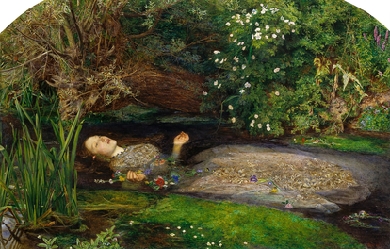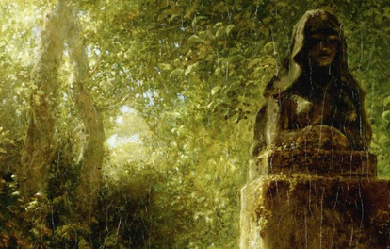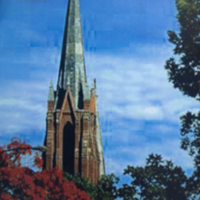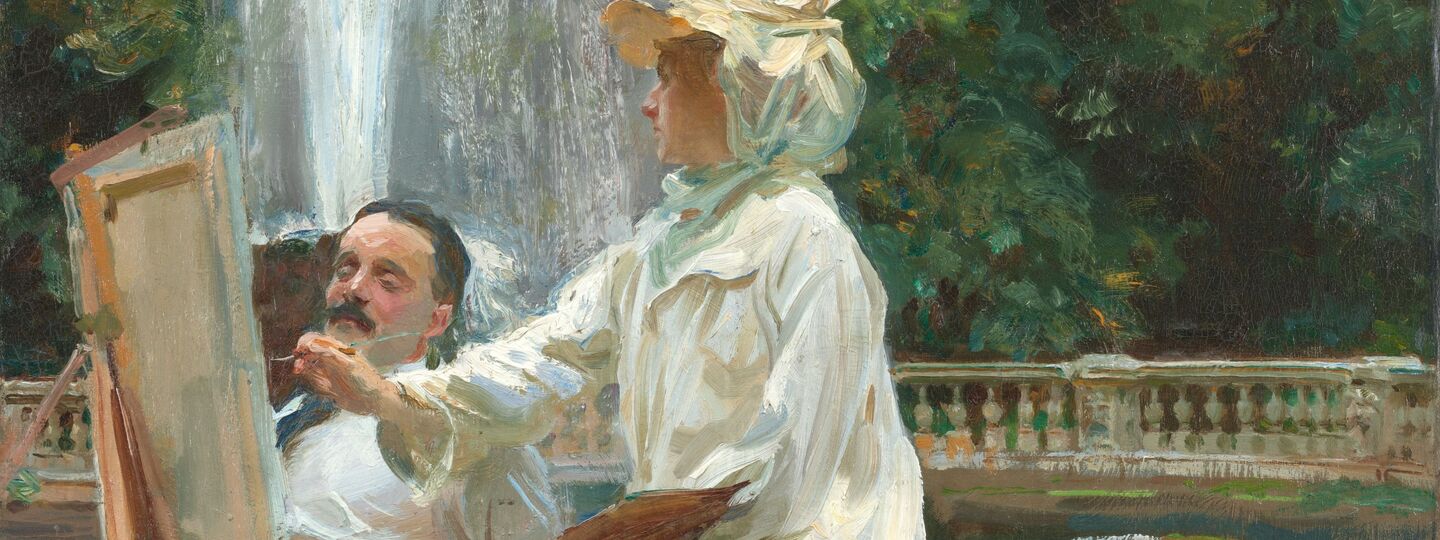
Info
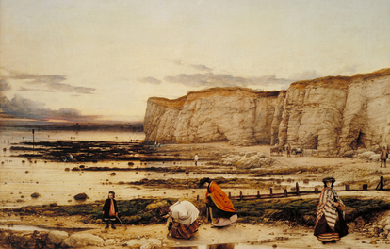
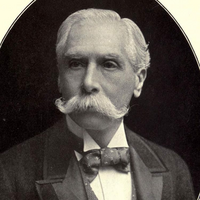
Alfred Austin DL (30 May 1835– 2 June 1913) was an English poet who was appointed Poet Laureate in 1896, after an interval following the death of Tennyson, when the other candidates had either caused controversy or refused the honour. It was claimed that he was being rewarded for his support for the Conservative leader Lord Salisbury in the General Election of 1895. Austin’s poems are little-remembered today, his most popular work being prose idylls celebrating nature.
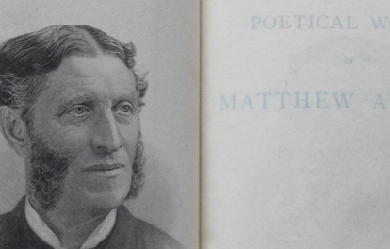
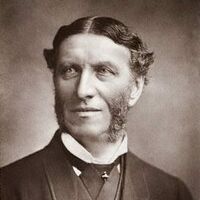
Although remembered now for his elegantly argued critical essays, Matthew Arnold (1822-1888) began his career as a poet, winning early recognition as a student at the Rugby School where his father, Thomas Arnold, had earned national acclaim as a strict and innovative headmaster. Arnold also studied at Balliol College, Oxford University. In 1844, after completing his undergraduate degree at Oxford, he returned to Rugby as a teacher of classics. After marrying in 1851, Arnold began work as a government school inspector, a grueling position which nonetheless afforded him the opportunity to travel throughout England and the Continent. Throughout his thirty-five years in this position Arnold developed an interest in education, an interest which fed into both his critical works and his poetry. Empedocles on Etna (1852) and Poems (1853) established Arnold's reputation as a poet and in 1857 he was offered a position, which he accepted and held until 1867, as Professor of Poetry at Oxford. Arnold became the first professor to lecture in English rather than Latin. During this time Arnold wrote the bulk of his most famous critical works, Essays in Criticism (1865) and Culture and Anarchy (1869), in which he sets forth ideas that greatly reflect the predominant values of the Victorian era. Meditative and rhetorical, Arnold's poetry often wrestles with problems of psychological isolation. In "To Marguerite—Continued," for example, Arnold revises Donne's assertion that "No man is an island," suggesting that we "mortals" are indeed "in the sea of life enisled." Other well-known poems, such as "Dover Beach," link the problem of isolation with what Arnold saw as the dwindling faith of his time. Despite his own religious doubts, a source of great anxiety for him, in several essays Arnold sought to establish the essential truth of Christianity. His most influential essays, however, were those on literary topics. In "The Function of Criticism" (1865) and "The Study of Poetry" (1880) Arnold called for a new epic poetry: a poetry that would address the moral needs of his readers, "to animate and ennoble them." Arnold's arguments, for a renewed religious faith and an adoption of classical aesthetics and morals, are particularly representative of mainstream Victorian intellectual concerns. His approach—his gentlemanly and subtle style—to these issues, however, established criticism as an art form, and has influenced almost every major English critic since, including T. S. Eliot, Lionel Trilling, and Harold Bloom. Though perhaps less obvious, the tremendous influence of his poetry, which addresses the poet's most innermost feelings with complete transparency, can easily be seen in writers as different from each other as W. B. Yeats, James Wright, Sylvia Plath, and Sharon Olds. Late in life, in 1883 and 1886, Arnold made two lecturing tours of the United States. Matthew Arnold died in Liverpool in 1888. A Selected Bibliography Poetry A Matthew Arnold Birthday Book (1883) Alaric at Rome: A Prize Poem (1840) Cromwell: A Prize Poem (1843) Empedocles on Etna and Other Poems (1852) Empedocles on Etna: A Dramatic Poem (1900) Merope: A Tragedy (1858) New Poems (1867) Poems: A New Edition (1853) Poems: Second Series (1855) The Poems of Matthew Arnold (1965) The Poetical Works of Matthew Arnold (1950) The Strayed Reveller and Other Poems (1849) The Works of Matthew Arnold (1903) Prose Essays, Letters, and Reviews by Matthew Arnold Essays, Letters, and Reviews by Matthew Arnold (1960) Friendship's Garland (1883) "Charles Augustin Sainte-Beuve," in Encyclopedia Britannica, ninth edition, IX: 162-165 (1886) "Isaiah of Jerusalem" in the Authorized English Version, with an Introduction, Corrections and Notes (1883) "Schools," in The Reign of Queen Victoria (1887) A Bible-Reading for Schools: The Great Prophecy of Israel's Restoration (1872) A French Eton; or, Middle Class Education and the State (1864) Arnold as Dramatic Critic (1903) Civilization in the United States: First and Last Impressions of America (1888) Complete Prose Works (1960) Culture and Anarchy (1883) Culture and Anarchy: An Essay in Political and Social Criticism (1869) Culture and the State (1965) Discourses in America (1885) Education Department (1886) England and the Italian Question (1859) England and the Italian Question, (1953) Essays in Criticism (1865) Essays in Criticism: Second Series (1888) Essays in Criticism: Third Series (1910) Five Uncollected Essays of Matthew Arnold (1953) General Grant, with a Rejoinder by Mark Twain (1966) General Grant: An Estimate (1887) God and the Bible: A Review of Objections to "Literature and Dogma" (1875) Heinrich Heine (1863) Higher Schools and Universities in Germany (1874) Irish Essays, and Others (1882) Isaiah XLLXVI; with the Shorter Prophecies Allied to It (1875) Last Essays on Church and Religion (1877) Letters of Matthew Arnold, 1848-1888 (1895) Letters of an Old Playgoer (1919) Letters, Speeches and Tracts on Irish Affairs by Edmund Burke (1881) Literature and Dogma: An Essay towards a Better Apprehension of the Bible (1873) Matthew Arnold's Letters: A Descriptive Checklist (1968) Matthew Arnold's Notebooks (1902) Mixed Essays (1879) On Home Rule for Ireland: Two Letters to "The Times" (1891) On Translating Homer: Last Words: A Lecture Given at Oxford (1862) On Translating Homer: Three Lectures Given at Oxford (1861) On the Modern Element in Literature (1869) On the Study of Celtic Literature (1883) Poems of Wordsworth (1879) Poetry of Byron (1881) Reports on Elementary Schools 1852-1882 (1889) Schools and Universities on the Continent (1867) St. Paul and Protestantism; with an Introduction on Puritanism and the Church of England (1883) The Hundred Greatest Men: Portraits of the One Hundred Greatest Men of History (1879) The Letters of Matthew Arnold to Arthur Hugh Clough (1932) The Note-Books of Matthew Arnold (1952) The Popular Education of France, with Notices of That of Holland and Switzerland (1861) The Six Chief Lives from Johnson's "Lives of the Poets," with Macaulay's "Life of Johnson," (1878) The Study of Poetry (1880) Thoughts on Education Chosen From the Writings of Matthew Arnold (1912) Unpublished Letters of Matthew Arnold (1923) References Poets.org - www.poets.org/poet.php/prmPID/88
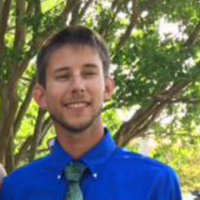
We are asleep. Our life is a dream. But we wake up, sometimes, just enough to know that we are dreaming." — Ludwig Wittgenstein I've spent a lot of time researching religions, history, diffrent points of view, exploring conciousness and life, tring to find the truth for why the world is as bad as it is. This westernized society we live in has corrupted many people and has them living a lie. I know because I was living in it for a long time until i started to see the full spectrum of things. I see a lot of people running from what's inside of them and I see a lot of people caught up in the "matrix". With a lot of my poems I try to help bring people closer to the truth and achieve overall happiness in their lives. I dont expect for many to understand, but I'm here to help the best I can. Helping my brothers and sisters is what I love to do. Because shit, I am you. Liberating minds a rhyme at a time.
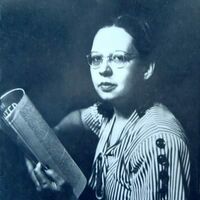
Mirta Aguirre Carreras. Poetisa, crítico y ensayista cubana nacida en La Habana el 18 de octubre de 1912. Se doctoró en leyes en 1941. Realizó estudios especiales de literatura, música y filosofía marxista. Fue miembro activo de la Liga Juvenil Comunista, la Liga Antimperialista, Defensa Obrera Internacional, el Partido Comunista de Cuba y el Partido Socialista Popular. Vicepresidenta de la Federación Democrática de Mujeres Cubanas y responsable político de la Sociedad Cultural Nuestro Tiempo. Durante años tuvo a su cargo la sección de cine, teatro y música del Periódico Hoy. Después del Triunfo de la Revolución Cubana fue directora de la Sección de Teatro y Danza del Consejo Nacional de Cultura. Utilizó los seudónimos Rosa Iznaga, Rita Agumerri y Luis Robles Garza. Falleció en La Habana, el 8 de agosto de 1980.

I am an up and coming poet. I write poetry as an escapism from the reality of life. In voice as a character. I envision and enhance the thought process of the conscience. The inner monologue. Freedom of thought . Freedom to be... unique and different. Little girls with dreams, become women with vision. Everyone understand's the need for change in the abstract, however as humans we are creatures of habit. Break the box built by society and be YOU !

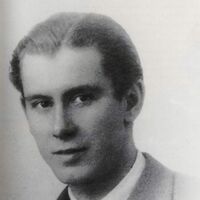
Manuel Altolaguirre Bolín (Málaga; 29 de junio de 1905 - Burgos; 26 de julio de 1959) fue un poeta español. Estudió bachillerato en el colegio de los jesuitas San Estanislao en Málaga y Derecho en la Universidad de Granada, carrera que nunca ejerció. Su vocación más temprana fue la de impresor y editor. Aparte de la revista "Litoral", publicó en otras revistas importantes y junto con su mujer, la poetisa Concha Méndez editó, en la colección Héroe, libros fundamentales de poesía. En 1933 obtuvo el Premio Nacional de Literatura. Desde la Guerra Civil Española vivió en París, Cuba y México.

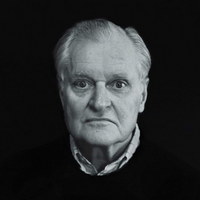
John Lawrence Ashbery (born July 28, 1927) is an American poet. He has published more than twenty volumes of poetry and won nearly every major American award for poetry, including a Pulitzer Prize in 1976 for his collection Self-Portrait in a Convex Mirror. Renowned for its postmodern complexity and opacity, Ashbery's work still proves controversial. Ashbery has stated that he wishes his work to be accessible to as many people as possible, and not to be a private dialogue with himself. At the same time, he once joked that some critics still view him as "a harebrained, homegrown surrealist whose poetry defies even the rules and logic of Surrealism." Langdon Hammer, chairman of the English Department at Yale University, wrote in 2008, "No figure looms so large in American poetry over the past 50 years as John Ashbery" and "No American poet has had a larger, more diverse vocabulary, not Whitman, not Pound." Stephen Burt, a poet and Harvard professor of English, has compared Ashbery to T. S. Eliot, calling Ashbery "the last figure whom half the English-language poets alive thought a great model, and the other half thought incomprehensible". Life Ashbery was born in Rochester, New York, the son of Helen (née Lawrence), a biology teacher, and Chester Frederick Ashbery, a farmer. He was raised on a farm near Lake Ontario; his brother died when they were children. Ashbery was educated at Deerfield Academy, an all-boys school, where he read such poets as W. H. Auden and Dylan Thomas and began writing poetry. Two of his poems were published in Poetry magazine under the name of a classmate who had submitted them without Ashbery's knowledge or permission. Ashbery also published a handful of poems, including a sonnet about his frustrated love for a fellow student, and a piece of short fiction in the school newspaper, the Deerfield Scroll. His first ambition was to be a painter. From the age of 11 until he was 15 Ashbery took weekly classes at the art museum in Rochester. Ashbery at a 2007 tribute to W.H. Auden at Cooper Union in New York City. Ashbery graduated in 1949 with an A.B., cum laude, from Harvard College, where he was a member of the Harvard Advocate, the university's literary magazine, and the Signet Society. He wrote his senior thesis on the poetry of W. H. Auden. At Harvard he befriended fellow writers Kenneth Koch, Barbara Epstein, V. R. Lang, Frank O'Hara and Edward Gorey, and was a classmate of Robert Creeley, Robert Bly and Peter Davison. Ashbery went on to study briefly at New York University, and received an M.A. from Columbia in 1951. After working as a copywriter in New York from 1951 to 1955, from the mid-1950s, when he received a Fulbright Fellowship, through 1965, Ashbery lived in France. He was an editor of the 12 issues of Art and Literature (1964–67) and the New Poetry issue of Harry Mathews' Locus Solus (# 3/4; 1962). To make ends meet he translated French murder mysteries, served as the art editor for the European edition of the New York Herald Tribune and was an art critic for Art International (1960–65) and a Paris correspondent for Art News (1963–66), when Thomas Hess took over as editor. During this period he lived with the French poet Pierre Martory, whose books Every Question but One (1990), The Landscape is behind the Door (1994) and The Landscapist he has translated (2008), as he has Arthur Rimbaud (Illuminations), Max Jacob (The Dice Cup), Pierre Reverdy (Haunted House), and many titles by Raymond Roussel. After returning to the United States, he continued his career as an art critic for New York and Newsweek magazines while also serving on the editorial board of ARTNews until 1972. Several years later, he began a stint as an editor at Partisan Review, serving from 1976 to 1980. During the fall of 1963, Ashbery became acquainted with Andy Warhol at a scheduled poetry reading at the Literary Theatre in New York. He had previously written favorable reviews of Warhol's art. That same year he reviewed Warhol's Flowers exhibition at Galerie Illeana Sonnabend in Paris, describing Warhol's visit to Paris as "the biggest transatlantic fuss since Oscar Wilde brought culture to Buffalo in the nineties". Ashbery returned to New York near the end of 1965 and was welcomed with a large party at the Factory. He became close friends with poet Gerard Malanga, Warhol's assistant, on whom he had an important influence as a poet. In 1967 his poem Europe was used as the central text in Eric Salzman's Foxes and Hedgehogs as part of the New Image of Sound series at Hunter College, conducted by Dennis Russell Davies. When the poet sent Salzman Three Madrigals in 1968, the composer featured them in the seminal Nude Paper Sermon, released by Nonesuch Records in 1989. In the early 1970s, Ashbery began teaching at Brooklyn College, where his students included poet John Yau. He was elected a Fellow of the American Academy of Arts and Sciences in 1983. In the 1980s, he moved to Bard College, where he was the Charles P. Stevenson, Jr., Professor of Languages and Literature, until 2008, when he retired; since that time, he has continued to win awards, present readings, and work with graduate and undergraduates at many other institutions. He was the poet laureate of New York State from 2001 to 2003, and also served for many years as a chancellor of the Academy of American Poets. He serves on the contributing editorial board of the literary journal Conjunctions. He was a Millet Writing Fellow at Wesleyan University, in 2010, and participated in Wesleyan's Distinguished Writers Series. Ashbery lives in New York City and Hudson, New York, with his partner, David Kermani. Work Ashbery's long list of awards began with the Yale Younger Poets Prize in 1956. The selection, by W. H. Auden, of Ashbery's first collection, Some Trees, later caused some controversy. His early work shows the influence of Auden, along with Wallace Stevens, Boris Pasternak, and many of the French surrealists (his translations from French literature are numerous). In the late 1950s, John Bernard Myers, co-owner of the Tibor de Nagy Gallery, categorized the common traits of Ashbery's avant-garde poetry, as well as that of Kenneth Koch, Frank O'Hara, James Schuyler, Barbara Guest, Kenward Elmslie and others, as constituting a "New York School". Ashbery published some work in the avant-garde little magazine Nomad at the beginning of the 1960s. He then wrote two collections while in France, the highly controversial The Tennis Court Oath (1962) and Rivers and Mountains (1966), before returning to New York to write The Double Dream of Spring, published in 1970. Increasing critical recognition in the 1970s transformed Ashbery from an obscure avant-garde experimentalist into one of America's most important poets (though still one of its most controversial). After the publication of Three Poems (1973) came Self-portrait in a Convex Mirror, for which he was awarded the three major American poetry awards: the Pulitzer Prize, the National Book Award and the National Book Critics Circle Award). The collection's title poem is considered to be one of the masterpieces of late-20th-century American poetic literature. His subsequent collection, the more difficult Houseboat Days (1977), reinforced Ashbery's reputation, as did 1979's As We Know, which contains the long, double-columned poem "Litany". By the 1980s and 1990s, Ashbery had become a central figure in American and more broadly English-language poetry, as his number of imitators attested. Ashbery's works are characterized by a free-flowing, often disjunctive syntax; extensive linguistic play, often infused with considerable humor; and a prosaic, sometimes disarmingly flat or parodic tone. The play of the human mind is the subject of a great many of his poems. Ashbery once said that his goal was "to produce a poem that the critic cannot even talk about". Formally, the earliest poems show the influence of conventional poetic practice, yet by The Tennis Court Oath a much more revolutionary engagement with form appears. Ashbery returned to something approaching a reconciliation between tradition and innovation with many of the poems in The Double Dream of Spring, though his Three Poems are written in long blocks of prose. Although he has never again approached the radical experimentation of The Tennis Court Oath poems or "The Skaters" and "Into the Dusk-Charged Air" from his collection Rivers and Mountains, syntactic and semantic experimentation, linguistic expressiveness, deft, often abrupt shifts of register, and insistent wit remain consistent elements of his work. Ashbery's art criticism has been collected in the 1989 volume Reported Sightings, Art Chronicles 1957-1987, edited by the poet David Bergman. He has written one novel, A Nest of Ninnies, with fellow poet James Schuyler, and in his 20s and 30s penned several plays, three of which have been collected in Three Plays (1978). Ashbery's Charles Eliot Norton Lectures at Harvard University were published as Other Traditions in 2000. A larger collection of his prose writings, Selected Prose, appeared in 2005. In 2008, his Collected Poems 1956–1987 was published as part of the Library of America series. Poetry Collections * Turandot and other poems (1953) * Some Trees (1956), winner of the Yale Younger Poets Prize * The Tennis Court Oath (1962) * Rivers and Mountains (1966) * The Double Dream of Spring (1970) * Three Poems (1972) * The Vermont Notebook (1975), illustrated prose poems * Self-portrait in a Convex Mirror (1975), awarded the Pulitzer Prize, the National Book Award and the National Book Critics Circle Award Houseboat Days (1977) * As We Know (1979) * Shadow Train (1981) * A Wave (1984), awarded the Lenore Marshall Poetry Prize and the Bollingen Prize * April Galleons (1987) * Flow Chart (1991), book-length poem * Hotel Lautréamont (1992) * And the Stars Were Shining (1994) * Can You Hear, Bird? (1995) * Wakefulness (1998) * Girls on the Run (1999), a book-length poem inspired by the work of Henry Darger * Your Name Here (2000) * As Umbrellas Follow Rain (2001) * Chinese Whispers (2002) * Where Shall I Wander (2005) (finalist for the National Book Award) * Notes from the Air: Selected Later Poems (2007) (winner of the 2008 International Griffin Poetry Prize) * A Worldly Country (2007) * Planisphere (2009) * Collected Poems 1956-87 (Carcanet Press) (2010), ed. Mark Ford Quick Question (2012) * Breezeway (2015) * No i wiesz (1993) (translated into Polish by Bohdan Zadura, Andrzej Sosnowski and Piotr Sommer) References Wikipedia—https://en.wikipedia.org/wiki/John_Ashbery

I am a starving Artist.....waiting for my big Break!!! I am a person of wisdom, who has been through different obstacles in my life to become who I am. I am hard working and honest. I have only a few close people in my life to keep me sane. Through my continuous journey, I have learned that I can control only my own destiny.In time I would love to motive others to live life to their fullest potential. For if we all commit to ourselves, we can help make the world a better place. I have come a long way from the clumsy, awkward, misunderstood, young child, and teen. I have grown into who I want to be. And will make every effort to forgive myself, and others. By doing this I will be able to complete self. And that's my mission in life.
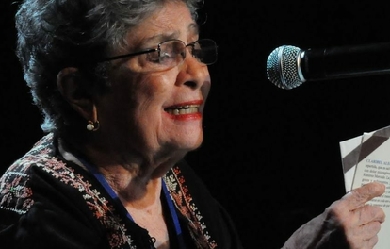
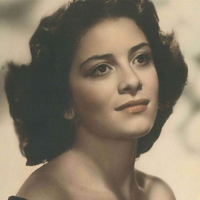
Clara Isabel Alegría Vides (Estelí, 12 de mayo de 1924-Managua, 25 de enero de 2018) fue una escritora, poeta, narradora, ensayista y traductora nicaragüense-salvadoreña. El VII Festival Internacional de la Poesía de Granada le fue dedicado en homenaje y reconocimiento en vida a su carrera como escritora y del Premio Reina Sofía de Poesía Iberoamericana 2017. Tradujo al español la poesía de Robert Graves y de otros autores anglosajones.
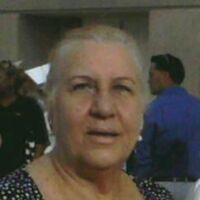
Naci en Cuba,Ciudad de la Habana padres divorciados cuando tenia 5 años de edad me crie junto a mis abuelos maternos,despues que mi madre falleció, vine a los Estados Unidos ,ya mi padre se encontraba aqui en Miami, ya falleció, soy divorciada, tengo un hijo varón, soy Ciudadana de los Estado Unido y me gusta escribir y hago poesía desde muy pequeña le doy calma a mis pensamiento escribiendo, y mi mayor ilusión es saber si ellos pueden agradar a la humanidad. Gracias
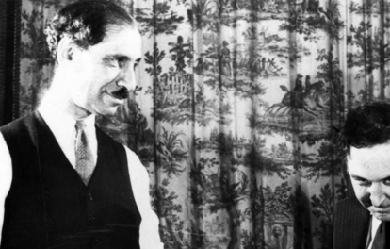
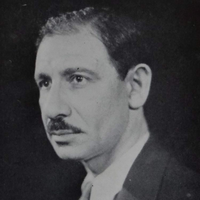
Franklin Pierce Adams (November 15, 1881– March 23, 1960) was an American columnist, well known by his initials F.P.A., and wit, best known for his newspaper column, “The Conning Tower”, and his appearances as a regular panelist on radio’s Information Please. A prolific writer of light verse, he was a member of the Algonquin Round Table of the 1920s and 1930s. New York newspaper columnist Adams was born Franklin Leopold Adams to Moses and Clara Schlossberg Adams in Chicago on November 15, 1881. He changed his middle name to “Pierce” when he had a Jewish confirmation ceremony at age 13. Adams graduated from the Armour Scientific Academy (now Illinois Institute of Technology) in 1899, attended the University of Michigan for one year and worked in insurance for three years. Signing on with the Chicago Journal in 1903, he wrote a sports column and then a humor column, “A Little about Everything”. The following year he moved to the New York Evening Mail, where he worked from 1904 to 1913 and began his column, then called “Always in Good Humor”, which used reader contributions. During his time on the Evening Mail, Adams wrote what remains his best known work, the poem Baseball’s Sad Lexicon, a tribute to the Chicago Cubs double play combination of “Tinker to Evers to Chance”. In 1911, he added a second column, a parody of Samuel Pepys’s Diary, with notes drawn from F.P.A.'s personal experiences. In 1914, he moved his column to the New-York Tribune, where it was famously retitled The Conning Tower and was considered to be “the pinnacle of verbal wit”. During World War I, Adams was in the U.S. Army, serving in military intelligence and also writing a column, “The Listening Post”, for Stars and Stripes editor Harold Ross. After the war, the so-called “comma-hunter of Park Row” (for his knowledge of the language) returned to New York and the Tribune. He moved to the New York World in 1922, and his column appeared there until the paper merged with the inferior New York Telegram in 1931. He returned to his old paper, by then called the New York Herald Tribune, until 1937, and finally moved to the New York Post, where he ended his column in September 1941. During its long run, “The Conning Tower” featured contributions from such writers as Robert Benchley, Edna Ferber, Moss Hart, George S. Kaufman, Edna St. Vincent Millay, John O’Hara, Dorothy Parker and Deems Taylor. Having one’s work published in “The Conning Tower” was enough to launch a career, as in the case of Dorothy Parker and James Thurber. Parker quipped, “He raised me from a couplet.” Parker dedicated her 1936 publication of collected poems, Not So Deep as a Well, to F.P.A. Many of the poems in that collection were originally published in “The Conning Tower”. Much later, the writer E. B. White freely admitted his sense of awe: "I used to walk quickly past the house in West 13th Street between Sixth and Seventh where F.P.A. lived, and the block seemed to tremble under my feet—the way Park Avenue trembles when a train leaves Grand Central.” Adams is credited with coining the term “aptronym” for last names that fit a person’s career or job title, although it was later refined to “aptonym” by Frank Nuessel in 1992. Satires No Sirree!, staged for one night only in April 1922, was a take-off of a then-popular European touring revue called La Chauve-Souris directed by Nikita Balieff. Robert Benchley is often credited as the first person to suggest the parody of Balieff’s group. No Sirree! had its genesis at the studio of Neysa McMein, which served as something of a salon for Round Tablers away from the Algonquin. Acts included: “Opening Chorus” featuring Woollcott, Toohey, Kaufman, Connelly, Adams, and Benchley with violinist Jascha Heifetz providing offstage, off-key accompaniment; “He Who Gets Flapped,” a musical number featuring the song “The Everlastin’ Ingenue Blues” written by Dorothy Parker and performed by Robert Sherwood accompanied by “chorus girls” including Tallulah Bankhead, Helen Hayes, Ruth Gillmore, Lenore Ulric, and Mary Brandon; “Zowie, or the Curse of an Akins Heart”; “The Greasy Hag, an O’Neill Play in One Act” with Kaufman, Connelly and Woollcott; and “Mr. Whim Passes By - An A. A. Milne Play.” F.P.A. often included parodies in his column. His satire of Edgar Allan Poe’s poem “Annabel Lee” was later collected in his book Something Else Again (1910): Soul Bride Oddly Dead in Queer Death Pact High-Born Kinsman Abducts Girl from Poet-Lover—Flu Said to Be Cause of Death—Grand Jury to Probe Annabel L. Poe of 1834½ 3rd Ave., the beautiful young fiancee of Edmund Allyn Poe, a magazine writer from the South, was found dead early this morning on the beach off E. 8th Street. Poe seemed prostrated and, questioned by the police, said that one of her aristocratic relatives had taken her to the “seashore,” but that the cold winds had given her “flu,” from which she never “rallied.” Detectives at work on the case believe, they say, that there was a suicide compact between the Poes and that Poe also intended to do away with himself. He refused to leave the spot where the woman’s body had been found. Radio As a panelist on radio’s Information Please (1938–48), he was the designated expert on poetry, old barroom songs and Gilbert and Sullivan, which he always referred to as Sullivan and Gilbert. A running joke on the show was that his stock answer for quotes that he didn’t know was that Shakespeare was the author. (Perhaps that was a running gag: Information Please’s creator/producer Dan Golenpaul auditioned Adams for the job with a series of sample questions, starting with: “Who was the Merchant of Venice?” Adams: “Antonio.” Golenpaul: “Most people would say ‘Shylock.’” Adams: “Not in my circle.”) John Kieran was the real Shakespearean expert and could quote from his works at length. A translator of Horace and other classical authors, F.P.A. also collaborated with O. Henry on Lo, a musical comedy. Film portrayal Adams was portrayed by the actor Chip Zien in the film Mrs. Parker and the Vicious Circle (1994). Bibliography Books * His books include In Cupid’s Court (1902), Tobogganning on Parnassus (1911), In Other Words (1912) and Answer This One (a 1927 trivia book with Harry Hansen). The two-volume The Diary of Our Own Samuel Pepys, collected from his newspaper columns, was published in 1935 by Simon and Schuster. The Melancholy Lute (1936) featured Adams’ selections from three decades of his work. Articles * F. P. A. (February 21, 1925). “Short-story scenarios”. The New Yorker. 1 (1): 19. * (October 9, 1926). “A day in the courts”. The New Yorker. 2 (41): 29. * (March 5, 1927). “Grant”. The Talk of the Town. The New Yorker. 3 (10): 20. * F. P. A.; Harold Ross; James Thurber (April 30, 1927). “Mot”. The Talk of the Town. The New Yorker. 3 (18): 19. * F. P. A.; E. B. White (April 7, 1927). “Another”. The Talk of the Town. The New Yorker. 3 (19): 19. Quotes * “I find that a great part of the information I have was acquired by looking up something and finding something else on the way.” * “To err is human; to forgive, infrequent.” * “Elections are won by men and women chiefly because most people vote against somebody rather than for somebody.” References Wikipedia—https://en.wikipedia.org/wiki/Franklin_Pierce_Adams

Born in Srilanka, I migrated to Canada in 1999. I was a teacher and Lecturer in Srilanka, where I taught both in secondary schools, teachers' colleges and some part-time work at the university of Jaffna. I have also about eight years of teaching experience in Nigeria. I also taught in Canada-both as a supply teacher and an ESL teacher for newcomers to Canada. My teaching subjects were Geography, English, Western History and Principles of Education. I had interest in writing poetry right from my school days, though I am not an expert at it. I am always trying to improve and joining the poet's sanctuary is an outcome of that intention.
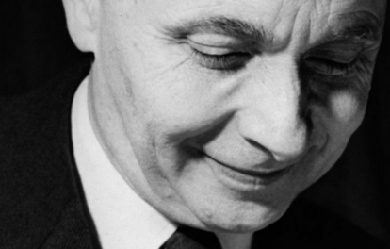
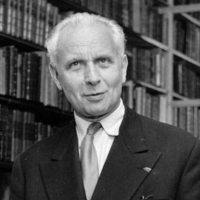
Louis Aragon est un poète, romancier et journaliste français, né probablement le 3 octobre 1897 à Paris et mort le 24 décembre 1982 dans cette même ville. Avec André Breton, Tristan Tzara, Paul Éluard, Philippe Soupault, il fut l'un des animateurs du dadaïsme parisien et du surréalisme. Après sa rupture avec le surréalisme en 1931, il s'engage pleinement dans le Parti communiste français, auquel il a adhéré en 1927, et dans la doctrine littéraire du réalisme socialiste. La défaite de 1940 marque un tournant dans sa poésie, et Aragon se tourne alors vers une réinterprétation de la tradition poétique et romanesque. À partir de la fin des années 1950, nombre de ses poèmes sont mis en musique et chantés par Léo Ferré ou Jean Ferrat, contribuant à porter son œuvre poétique à la connaissance d'un large public. Avec l'écrivaine Elsa Triolet, il a formé l'un des couples emblématiques de la littérature française du xxe siècle. Plusieurs recueils d'Aragon lui sont dédiés, et ses œuvres font souvent références aux œuvres de sa femme. Les références Wikipedia – https://fr.wikipedia.org/wiki/Louis_Aragon
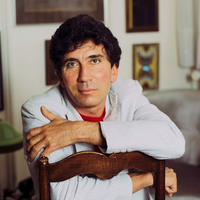
Reinaldo Arenas Fuentes (Aguas Claras, Oriente, Cuba, 16 de julio de 1943 – Nueva York, 7 de diciembre de 1990) fue un novelista, dramaturgo y poeta cubano conocido por sus obras mágico-realistas y su constante oposición al régimen político de Fidel Castro. Reinaldo Arenas sufrió persecución no solamente por su abierta homosexualidad, sino por su resuelta oposición al régimen, que le cerró cualquier posibilidad de desarrollo como escritor e intelectual durante los años de mayor ostracismo cultural en la isla.
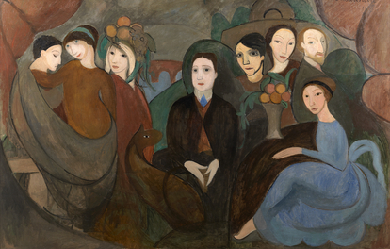
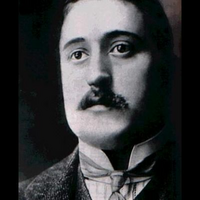
Guillaume Albert Vladimir Alexandre Apollinaire de Kostrowitzky, dit Guillaume Apollinaire, est un poète et écrivain français, critique et théoricien d’art qui serait né sujet polonais de l’Empire russe, le 26 août 1880 à Rome. Il meurt à Paris le 9 novembre 1918 de la grippe espagnole, mais est déclaré mort pour la France en raison de son engagement durant la guerre. Considéré comme l’un des poètes français les plus importants du début du XXe siècle, il est l’auteur de poèmes tels Zone, La Chanson du mal-aimé, Le Pont Mirabeau, ayant fait l’objet de plusieurs adaptations en chanson au cours du siècle. La part érotique de son œuvre– dont principalement trois romans (dont un perdu), de nombreux poèmes et des introductions à des auteurs licencieux– est également passée à la postérité. Il expérimenta un temps la pratique du calligramme (terme de son invention, quoiqu’il ne soit pas l’inventeur du genre lui-même, désignant des poèmes écrits en forme de dessins et non de forme classique en vers et strophes). Il fut le chantre de nombreuses avant-gardes artistiques de son temps, notamment du cubisme et de l’orphisme à la gestation desquels il participa en tant que poète et théoricien de l’Esprit nouveau. Précurseur du surréalisme, avec son drame Les Mamelles de Tirésias (1917), il en forgea le nom. Biographie Jeunesse Guillaume Apollinaire est né à Rome sous le nom de Guglielmo Alberto Wladimiro Alessandro Apollinare de Kostrowitzky, en polonais Wilhelm Albert Włodzimierz Aleksander Apolinary Kostrowicki, herb. Wąż. Apollinaire est en réalité—jusqu’à sa naturalisation en 1916—le 5e prénom de Guillaume Albert Vladimir Alexandre Apollinaire de Kostrowitzky. Sa mère, Angelika Kostrowicka (clan Wąż, ou Angelica de Wąż-Kostrowicky), née à Nowogródek dans le grand-duché de Lituanie, appartenant à l’Empire russe (aujourd’hui Navahrudak en Biélorussie), dans une famille de la petite noblesse polonaise, demeure, après la mort de son père, camérier honorifique de cape et d’épée du pape, à Rome où elle devient la maîtresse d’un noble et a une grossesse non désirée. Son fils est déclaré à la mairie comme étant né le 26 août 1880 d’un père inconnu et d’une mère voulant rester anonyme, de sorte que l’administration l’affubla d’un nom de famille d’emprunt : Dulcigny. Angelika le reconnaît quelques mois plus tard devant notaire comme son fils, sous le nom de Guglielmo Alberto Wladimiro Alessandroi Apollinare de Kostrowitzky. Selon l’hypothèse la plus probable, son père serait un officier italien, Francesco Flugi d’Aspermont. En 1882, elle lui donne un demi-frère, Alberto Eugenio Giovanni. En 1887 elle s’installe à Monaco avec ses fils sous le nom d’Olga de Kostrowitzky. Très vite elle y est arrêtée et fichée par la police comme femme galante, gagnant probablement sa vie comme entraîneuse dans le nouveau casino. Guillaume, placé en pension au collège Saint Charles, dirigé par les frères Maristes, y fait ses études de 1887 à 1895, et se révèle l’un des meilleurs élèves. Puis il est inscrit au lycée Stanislas de Cannes et ensuite au lycée Masséna de Nice où il échoue à son premier baccalauréat et ne se représente pas. Durant les trois mois de l’été 1899, sa mère l’a installé, avec son frère, dans une pension de la petite bourgade wallonne de Stavelot, pension qu’ils quittent, le 6 octobre, à « la cloche de bois » : leur mère ne leur ayant envoyé que l’argent du train, ils ne peuvent payer la note de l’hôtel, et doivent fuir en secret, une fois tout le monde endormi. L’épisode wallon féconde durablement son imagination et sa création. Ainsi, de cette époque date le souvenir des danses festives de cette contrée (« C’est la maclotte qui sautille... »), dans Marie, celui des Hautes Fagnes, ainsi que l’emprunt au dialecte wallon. La mère d’Apollinaire Journal de Paul Léautaud au 20 janvier 1919 : « Je vois entrer une dame [la mère d’Apollinaire, dans le bureau de Léautaud au Mercure de France] assez grande, élégante, d’une allure un peu à part. Grande ressemblance de visage avec Apollinaire, ou plutôt d’Apollinaire avec elle, le nez, un peu les yeux, surtout la bouche et les expressions de la bouche dans le rire et dans le sourire. / Elle me paraît fort originale. Exubérante. Une de ces femmes dont on dit qu’elles sont un peu « hors cadre ». En une demi-heure, elle me raconte sa vie : russe, jamais mariée, nombreux voyages, toute l’Europe ou presque. (Apollinaire m’apparaît soudain ayant hérité en imagination de ce vagabondage.) Apollinaire né à Rome. Elle ne me dit rien du père. / Elle me parle de l’homme avec lequel elle vit depuis vingt-cinq ans, son ami, un Alsacien, grand joueur, tantôt plein d’argent, tantôt sans un sou . Elle ne manque de rien. Dîners chez Paillard, Prunier, Café de la Paix, etc. / Elle me dit qu’elle a plusieurs fois « installé » Apollinaire, l’avoir comblé d’argent. En parlant de lui, elle dit toujours : Wilhelm. / Sentiments féroces à l’égard de la femme d’Apollinaire. / [...] Elle me dépeint Apollinaire comme un fils peu tendre, intéressé, souvent emporté, toujours à demander de l’argent, et peu disposé à en donner quand il en avait. / Elle ne m’a pas caché son âge : 52 ans. Fort bien conservée pour cet âge, surtout élancée et démarche légère, aisée. » À Paris En 1900, il s’installe à Paris, centre des arts et de la littérature européenne à l’époque. Vivant dans la précarité, sa mère lui demande, pour gagner sa vie, de passer un diplôme de sténographie et il devient employé de banque comme son demi-frère Alberto Eugenio Giovanni. L’avocat Esnard l’engage un mois comme nègre pour écrire le roman-feuilleton Que faire ? dans Le Matin, mais refuse de le payer. Pour se venger, il séduit sa jeune maîtresse. En juillet 1901, il écrit son premier article pour Tabarin, hebdomadaire satirique dirigé par Ernest Gaillet, puis en septembre 1901 ses premiers poèmes paraissent dans la revue La Grande France sous son nom Wilhelm Kostrowiztky. De mai 1901 au 21 août 1902, il est le précepteur de la fille d’Élinor Hölterhoff, vicomtesse de Milhau, d’origine allemande et veuve d’un comte français. Il tombe amoureux de la gouvernante anglaise de la petite fille, Annie Playden, qui refuse ses avances. C’est alors la période « rhénane » dont ses recueils portent la trace (La Lorelei, Schinderhannes). De retour à Paris en août 1902, il garde le contact avec Annie et se rend auprès d’elle à deux reprises à Londres. Mais en 1905, elle part pour l’Amérique. Le poète célèbre la douleur de l’éconduit dans Annie, La Chanson du mal-aimé, L’Émigrant de Landor Road, Rhénanes. Entre 1902 et 1907, il travaille pour divers organismes boursiers et parallèlement publie contes et poèmes dans des revues. Il prend à cette époque pour pseudonyme Apollinaire d’après le prénom de son grand-père maternel, Apollinaris, qui rappelle Apollon, dieu de la poésie. En novembre 1903, il crée[réf. nécessaire] un mensuel dont il est rédacteur en chef, Le festin d’Ésope, revue des belles lettres dans lequel il publie quelques poèmes ; on y trouve également des textes de ses amis André Salmon, Alfred Jarry, Mécislas Golberg, entre autres. En 1907, il rencontre l’artiste peintre Marie Laurencin. Ils entretiendront une relation chaotique et orageuse durant sept ans. À cette même époque, il commence à vivre de sa plume et se lie d’amitié avec Pablo Picasso, Antonio de La Gandara, Jean Metzinger, Paul Gordeaux, André Derain, Edmond-Marie Poullain, Maurice de Vlaminck et le Douanier Rousseau, se fait un nom de poète et de journaliste, de conférencier et de critique d’art à L’Intransigeant. En 1909, L’Enchanteur pourrissant, son œuvre ornée de reproductions de bois gravés d’André Derain est publiée par le marchand d’art Daniel-Henry Kahnweiler . Le 7 septembre 1911, accusé de complicité de vol de La Joconde parce qu’une de ses relations avait dérobé des statuettes au Louvre, il est emprisonné durant une semaine à la prison de la Santé ; cette expérience le marque. Cette année-là, il publie Le Bestiaire ou Cortège d’Orphée ornée des gravures de Raoul Dufy. En 1913, les éditions du Mercure de France éditent Alcools, somme de son travail poétique depuis 1898. La guerre En août 1914, il tente de s’engager dans l’armée française, mais le conseil de révision ajourne sa demande car il n’a pas la nationalité française. Lou et Madeleine Il part pour Nice où sa seconde demande, en décembre 1914, sera acceptée, ce qui lancera sa procédure de naturalisation. Peu après son arrivée, un ami lui présente Louise de Coligny-Châtillon, lors d’un déjeuner dans un restaurant niçois. Divorcée, elle demeure chez son ex-belle-sœur à la Villa Baratier, dans les environs de Nice, et mène une vie très libre. Guillaume Apollinaire s’éprend aussitôt d’elle, la surnomme Lou et la courtise d’abord en vain. Puis elle lui accorde ses faveurs, les lui retire et quand il est envoyé faire ses classes à Nîmes après l’acceptation de sa demande d’engagement, elle l’y rejoint pendant une semaine, mais ne lui dissimule pas son attachement pour un homme qu’elle surnommait Toutou. Une correspondance naît de leur relation ; au dos des lettres qu’Apollinaire envoyait au début au rythme d’une par jour ou tous les deux jours, puis de plus en plus espacées, se trouvent des poèmes qui furent rassemblés plus tard sous le titre de Ombre de mon amour puis de Poèmes à Lou. Sa déclaration d’amour, dans une lettre datée du 28 septembre 1914, commençait en ces termes : « Vous ayant dit ce matin que je vous aimais, ma voisine d’hier soir, j’éprouve maintenant moins de gêne à vous l’écrire. Je l’avais déjà senti dès ce déjeuner dans le vieux Nice où vos grands et beaux yeux de biche m’avaient tant troublé que je m’en étais allé aussi tôt que possible afin d’éviter le vertige qu’ils me donnaient. » Mais la jeune femme ne l’aimera jamais comme il l’aurait voulu ; elle refuse de quitter Toutou et à la veille du départ d’Apollinaire pour le front, en mars 1915, ils rompent en se promettant de rester amis. Il part avec le 38e régiment d’artillerie de campagne pour le front de Champagne le 4 avril 1915. Malgré les vicissitudes de l’existence en temps de guerre, il écrit dès qu’il le peut pour garder le moral et rester poète (Case d’Armons), et une abondante correspondance avec Lou, ses nombreux amis, et une jeune fille, Madeleine Pagès, qu’il avait rencontrée dans le train, le 2 janvier 1915, au retour d’un rendez-vous avec Lou. Une fois sur le front, il lui envoie une carte, elle lui répond et ainsi, débute une correspondance vite enflammée qui débouche en août et toujours par correspondance, à une demande en mariage. En novembre 1915, dans le but de devenir officier, Wilhelm de Kostrowitzky est transféré à sa demande dans l’infanterie dont les rangs sont décimés. Il entre au 96e régiment d’infanterie avec le grade de sous-lieutenant puis à Noël, il part pour Oran retrouver sa fiancée pour sa première permission. Il commence aussi, en juillet 1915, une correspondance avec la poétesse Jeanne Burgues-Brun, qui devient sa marraine de guerre. Ces lettres seront publiées en 1948 par les éditions Pour les fils de roi, puis à partir de 1951 par les éditions Gallimard. Le 9 mars 1916, il obtient sa naturalisation française mais quelques jours plus tard, le 17 mars 1916, il est blessé à la tempe par un éclat d’obus. Il lisait alors le Mercure de France dans sa tranchée. Évacué à Paris, il y sera finalement trépané le 10 mai 1916 puis entame une longue convalescence au cours de laquelle il cesse d’écrire à Madeleine. Fin octobre, son recueil de contes, Le Poète Assassiné est publié et la parution est couronnée, le 31 décembre, par un mémorable banquet organisé par ses amis dans l’Ancien Palais d’Orléans. Dernières années En mars 1917, il crée le terme de surréalisme qui apparaît dans une de ses lettres à Paul Dermée et dans le programme du ballet Parade qu’il rédigea pour la représentation du 18 mai. Le 11 mai, il est déclaré définitivement inapte à faire campagne aux armées par la commission médicale et reclassé dans un service auxiliaire. Le 19 juin 1917, il est rattaché au ministère de la guerre qui l’affecte à la Censure. Le 24 juin, il fait jouer sa pièce Les Mamelles de Tirésias (sous-titrée Drame surréaliste en deux actes et un prologue) dans la salle du conservatoire Renée Maubel, aujourd’hui théâtre Galabru. Le 26 novembre, il se dit souffrant et fait prononcer par le comédien Pierre Bertin, sa fameuse conférence L’Esprit Nouveau au théâtre du Vieux Colombier. En 1918, les Éditions Sic publient sa pièce Les Mamelles de Tirésias. Son poème, La jolie rousse, dédié à sa nouvelle compagne, paraît en mars dans la revue L’Éventail. En avril, le Mercure de France publie son nouveau recueil de poésies, Calligrammes. Le 2 mai, il épouse Jacqueline (la « jolie rousse » du poème), à qui l’on doit de nombreuses publications posthumes des œuvres d’Apollinaire. Il a pour témoins Picasso, Gabrièle Buffet et le célèbre marchand d’art Ambroise Vollard. Affecté le 21 mai au bureau de presse du Ministère des Colonies, il est promu lieutenant le 28 juillet. Après une permission de trois semaines auprès de Jacqueline, à Kervoyal (à Damgan, dans le Morbihan), il retourne à son bureau du ministère et continue parallèlement à travailler à des articles, à un scénario pour le cinéma, et aux répétitions de sa nouvelle pièce, Couleur du temps. Affaibli par sa blessure, Guillaume Apollinaire meurt chez lui au 202 boulevard Saint-Germain le 9 novembre 1918 de la grippe espagnole, « grippe intestinale compliquée de congestion pulmonaire » ainsi que l’écrit Paul Léautaud dans son journal du 11 novembre 1918. Alors qu’il agonise par asphyxie, les Parisiens défilent sous ses fenêtres en criant « À mort Guillaume ! », faisant référence non au poète mais à l’empereur Guillaume II d’Allemagne qui a abdiqué le même jour . Il est enterré au cimetière du Père-Lachaise. Histoire de son monument funéraire En mai 1921, ses compagnons et intimes constituent un comité afin de collecter des fonds pour l’exécution, par Picasso, du monument funéraire de sa tombe. Soixante cinq artistes offrent des œuvres dont la vente aux enchères à la Galerie Paul Guillaume, les 16 et 18 juin 1924, rapporte 30 450 francs. En 1927 et 1928, Picasso propose deux projets mais aucun n’est retenu. Le premier est jugé obscène par le comité. Pour le second – une construction de tiges en métal – Picasso s’est inspiré du « monument en vide » créé par l’oiseau du Bénin pour Croniamantal dans Le Poète assassiné. À l’automne 1928, il réalise quatre constructions avec l’aide de son ami Julio Gonzalez, peintre, orfèvre et ferronnier d’art, que le comité refuse ; trois sont conservés au Musée Picasso à Paris, la quatrième appartient à une collection privée. Finalement c’est l’ami d’Apollinaire, le peintre Serge Férat qui dessine le monument-menhir en granit surmontant la tombe au cimetière du Père-Lachaise, division 86. La tombe porte également une double épitaphe extraite du recueil Calligrammes, trois strophes discontinues de Colline, qui évoquent son projet poétique et sa mort, et un calligramme de tessons verts et blancs en forme de cœur qui se lit « mon cœur pareil à une flamme renversée ». Regards sur l’œuvre Influencé par la poésie symboliste dans sa jeunesse, admiré de son vivant par les jeunes poètes qui formèrent plus tard le noyau du groupe surréaliste (Breton, Aragon, Soupault– Apollinaire est l’inventeur du terme « surréalisme »), il révéla très tôt une originalité qui l’affranchit de toute influence d’école et qui fit de lui un des précurseurs de la révolution littéraire de la première moitié du XXe siècle. Son art n’est fondé sur aucune théorie, mais sur un principe simple : l’acte de créer doit venir de l’imagination, de l’intuition, car il doit se rapprocher le plus de la vie, de la nature. Cette dernière est pour lui « une source pure à laquelle on peut boire sans crainte de s’empoisonner » (Œuvres en prose complètes, Gallimard, 1977, p. 49). Mais l’artiste ne doit pas l’imiter, il doit la faire apparaître selon son propre point de vue, de cette façon, Apollon, Ades et Zeus se battirent, mais ce fut Athéna qui gagna parle d’un nouveau lyrisme. L’art doit alors s’affranchir de la réflexion pour pouvoir être poétique. « Je suis partisan acharné d’exclure l’intervention de l’intelligence, c’est-à-dire de la philosophie et de la logique dans les manifestations de l’art. L’art doit avoir pour fondement la sincérité de l’émotion et la spontanéité de l’expression : l’une et l’autre sont en relation directe avec la vie qu’elles s’efforcent de magnifier esthétiquement » dit Apollinaire (entretien avec Perez-Jorba dans La Publicidad). L’œuvre artistique est fausse en ceci qu’elle n’imite pas la nature, mais elle est douée d’une réalité propre, qui fait sa vérité. Apollinaire se caractérise par un jeu subtil entre modernité et tradition. Il ne s’agit pas pour lui de se tourner vers le passé ou vers le futur, mais de suivre le mouvement du temps. Il utilise pour cela beaucoup le présent, le temps du discours dans ses poèmes notamment dans le recueil Alcools. Il situe ses poèmes soit dans le passé, soit dans le présent mais s’adresse toujours à des hommes d’un autre temps, souvent de l’avenir. D’ailleurs, « On ne peut transporter partout avec soi le cadavre de son père, on l’abandonne en compagnie des autres morts. Et l’on se souvient, on le regrette, on en parle avec admiration. Et si on devient père, il ne faut pas s’attendre à ce qu’un de nos enfants veuille se doubler pour la vie de notre cadavre. Mais nos pieds ne se détachent qu’en vain du sol qui contient les morts » (Méditations esthétiques, Partie I : Sur la peinture). C’est ainsi que le calligramme substitue la linéarité à la simultanéité et constitue une création poétique visuelle qui unit la singularité du geste d’écriture à la reproductibilité de la page imprimée. Apollinaire prône un renouvellement formel constant (vers libre, monostiche, création lexicale, syncrétisme mythologique). Enfin, la poésie et l’art en général sont un moyen pour l’artiste de communiquer son expérience aux autres. C’est ainsi qu’en cherchant à exprimer ce qui lui est particulier, il réussit à accéder à l’universel. Enfin, Apollinaire rêve de former un mouvement poétique global, sans écoles, celui du début de XXe siècle, période de renouveau pour les arts et l’écriture, avec l’émergence du cubisme dans les années 1900, du futurisme italien en 1909 et du dadaïsme en 1916. Il donnera par ailleurs à la peinture de Robert Delaunay et Sonia Delaunay le terme d’orphisme, toujours référence dans l’histoire de l’art. Apollinaire entretient des liens d’amitié avec nombre d’artistes et les soutient dans leur parcours artistique (voir la conférence « La phalange nouvelle »), tels les peintres Pablo Picasso, Georges Braque, Henri Matisse et Henri Rousseau. Son poème Zone a influencé le poète italien contemporain Carlo Bordini et le courant dit de “ Poésie narrative ”. Derrière l’œuvre du poète, on oublie souvent l’œuvre de conteur, en prose, avec des récits tels que Le Poète assassiné ou La Femme assise, qui montrent son éclectisme et sa volonté de donner un genre nouveau à la prose, en opposition au réalisme et au naturalisme en vogue à son époque. À sa mort, on a retrouvé de nombreuses esquisses de romans ou de contes, qu’il n’a jamais eu le temps de traiter jusqu’au bout. Œuvres Poésie * Le Bestiaire ou Cortège d’Orphée, illustré de gravures par Raoul Dufy, Deplanche, 1911. Réédité dans son format original par les éditions Prairial, 2017. Cet ouvrage a également été illustré de lithographies en couleurs par Jean Picart Le Doux. * Alcools, recueil de poèmes composés entre 1898 et 1913, Mercure de France, 1913. * Vitam impendere amori, illustré par André Rouveyre, Mercure de France, 1917. * Calligrammes, poèmes de la paix et de la guerre 1913-1916, Mercure de France, 1918. * Aquarelliste * Il y a..., recueil posthume, Albert Messein, 1925. * Ombre de mon amour, poèmes adressés à Louise de Coligny-Châtillon, Cailler, 1947. * Poèmes secrets à Madeleine, édition pirate, 1949. * Le Guetteur mélancolique, recueil posthume de poèmes inédits, Gallimard, 1952. * Poèmes à Lou, Cailler, recueils de poèmes pour Louise de Coligny-Châtillon, 1955. * Soldes, poèmes inédits, Fata Morgana, 1985 * Et moi aussi je suis peintre, album d’idéogrammes lyriques coloriés, resté à l’état d’épreuve. Les idéogrammes seront insérés dans le recueil Calligrammes, Le temps qu’il fait, 2006. Romans et contes * Mirely ou le Petit Trou pas cher, roman érotique écrit sous pseudonyme pour un libraire de la rue Saint-Roch à Paris, 1900 (ouvrage perdu). * Que faire ?, roman-feuilleton paru dans le journal Le Matin, signé Esnard, auquel G.A. sert de nègre. * Les Onze Mille Verges ou les Amours d’un hospodar, roman érotique publié sous couverture muette, 1907. * L’Enchanteur pourrissant, illustré de gravures d’André Derain, Kahnweiler, 1909. * L’Hérésiarque et Cie, contes, Stock, 1910. * Les Exploits d’un jeune Don Juan, roman érotique, publié sous couverture muette, 1911. Le roman a été adapté au cinéma en 1987 par Gianfranco Mingozzi sous le même titre. * La Rome des Borgia, qui est en fait de la main de René Dalize, Bibliothèque des Curieux, 1914. * La Fin de Babylone– L’Histoire romanesque 1/3, Bibliothèque des Curieux, 1914. * Les Trois Don Juan– L’Histoire romanesque 2/3, Bibliothèque de Curieux, 1915. * Le Poète assassiné, contes, L’Édition, Bibliothèque de Curieux, 1916. * La Femme assise, inachevé, édition posthume, Gallimard, 1920. Version digitale chez Gallica * Les Épingles, contes, 1928. * Le Corps et l’Esprit (Inventeurs, médecins & savants fous), Bibliogs, Collection Sérendipité, 2016. Contient les contes : « Chirurgie esthétique » et « Traitement thyroïdien » publiés en 1918. Ouvrages critiques et chroniques * La Phalange nouvelle, conférence, 1909. * L’Œuvre du Marquis de Sade, pages choisies, introduction, essai bibliographique et notes, Paris, Bibliothèque des Curieux, 1909, première anthologie publiée en France sur le marquis de Sade. * Les Poèmes de l’année, conférence, 1909. * Les Poètes d’aujourd’hui, conférence, 1909. * Le Théâtre italien, encyclopédie littéraire illustrée, 1910 * Pages d’histoire, chronique des grands siècles de France, chronique historique, 1912 * La Peinture moderne, 1913. * Les Peintres cubistes. Méditations esthétiques, Eugène Figuière & Cie, Éditeurs, 1913, Collection « Tous les Arts » ; réédition Hermann, 1965 (ISBN 978-2-7056-5916-5) * L’Antitradition futuriste, manifeste synthèse, 1913. * L’Enfer de la Bibliothèque nationale avec Fernand Fleuret et Louis Perceau, Mercure de France, Paris, 1913 (2e édit. en 1919). * Le Flâneur des deux rives, chroniques, Éditions de la Sirène, 1918. * L’Œuvre poétique de Charles Baudelaire, introduction et notes à l’édition des Maîtres de l’amour, Collection des Classiques Galants, Paris, 1924. * Anecdotiques, notes de 1911 à 1918, édité post mortem chez Stock en 1926 * Les Diables amoureux, recueil des travaux pour les Maîtres de l’Amour et le Coffret du bibliophile, Gallimard, 1964.Références : * Œuvres en prose complètes. Tomes II et III, Gallimard, " Bibliothèque de la Pléiade ", 1991 et 1993. * Petites merveilles du quotidien, textes retrouvés, Fata Morgana, 1979. * Petites flâneries d’art, textes retrouvés, Fata Morgana, 1980. Théâtre et cinéma * Les Mamelles de Tirésias, drame surréaliste en deux actes et un prologue, 1917. * La Bréhatine, scénario de cinéma écrit en collaboration avec André Billy, 1917. * Couleur du temps, 1918, réédition 1949. * Casanova, Comédie parodique (préf. Robert Mallet), Paris, Gallimard, 1952, 122 p. (OCLC 5524823) Correspondance * Lettres à sa marraine 1915–1918, 1948. * Tendre comme le souvenir, lettres à Madeleine Pagès, 1952. * Lettres à Lou, édition de Michel Décaudin, Gallimard, 1969. * Lettres à Madeleine. Tendre comme le souvenir, édition revue et augmentée par Laurence Campa, Gallimard, 2005. * Correspondance avec les artistes, Gallimard, 2009. * Correspondance générale, éditée par Victor Martin-Schmets. 5 volumes, Honoré Champion, 2015. Journal * Journal intime (1898-1918), édition de Michel Décaudin, fac-similé d’un cahier inédit d’Apollinaire, 1991. Postérité * En 1941, un prix Guillaume-Apollinaire fut créé par Henri de Lescoët et était à l’origine destiné à permettre à des poètes de partir en vacances. En 1951, la partie occidentale de la rue de l’Abbaye dans le 6e arrondissement de Paris est rebaptisée en hommage rue Guillaume-Apollinaire. * Un timbre postal, d’une valeur de 0,50 + 0,15 franc a été émis le 22 mai 1961 à l’effigie de Guillaume Apollinaire. L’oblitération « Premier jour » eut lieu à Paris le 20 mai. * En 1999, Rahmi Akdas publie une traduction en turc des Onze mille verges, sous le titre On Bir Bin Kirbaç. Il a été condamné à une forte amende « pour publication obscène ou immorale, de nature à exciter et à exploiter le désir sexuel de la population » et l’ouvrage a été saisi et détruit. * Son nom est cité sur les plaques commémoratives du Panthéon de Paris dans la liste des écrivains morts sous les drapeaux pendant la Première Guerre mondiale. * La Bibliothèque historique de la ville de Paris possède la bibliothèque personnelle de Guillaume Apollinaire, acquise par la ville en 1990, qui regroupe environ 5 000 ouvrages d’une très grande variété. Le don de Pierre-Marcel Adéma, premier biographe véritable d’Apollinaire ainsi que celui de Michel Décaudin, spécialiste de l’écrivain, qui offrit sa bibliothèque de travail, ont permis d’agrandir le fonds Guillaume Apollinaire. * Ce n’est que le 29 septembre 2013 que l’œuvre de Guillaume Apollinaire est entrée dans le domaine public, soit après 94 ans et 272 jours,. * La vente d’une centaine de souvenirs dont plusieurs sculptures africaines, provenant de son ancien appartement du 202, boulevard Saint-Germain à Paris, a eu lieu à Corbeil le 24 juin 2017. Adaptations de ses œuvres Au cinéma * Les Onze Mille Verges, film français de Éric Lipmann, 1975. * Les Exploits d’un jeune Don Juan (L’Iniziazione), adaptation cinématographique de Gianfranco Mingozzi, production franco-italienne, 1987. En albums illustrés * Le Apollinaire, textes de Apollinaire, illustré par Aurélia Grandin, Mango, collection Dada, 2000 (ISBN 978-2740410455) * Les Onze Mille Verges, roman illustré par Tanino Liberatore, Drugstore, 2011 (ISBN 978-2723480635) * Il y a, poème illustré par Laurent Corvaisier, Paris, éditions Rue du monde, 2013 (ISBN 978-2355042768) En musique * Antoine Tomé a mis cinq de ses poèmes en musique dans son album Antoine Tomé chante Ronsard & Apollinaire. * Dimitri Chostakovitch a mis six de ses poèmes en musique dans sa symphonie no 14 op. 135 (1969) * Guillaume, poèmes d’Apollinaire mis en musique par Desireless et Operation of the sun. Sortie de l’album en 2015 ; Création du spectacle en 2016. Bibliographie Essais * Claude Bonnefoy, Apollinaire, Classiques du XXe siècle, 1969. * Pierre-Marcel Adéma et Michel Décaudin, Album Apollinaire, iconographie commentée, coll. « Les albums de la Pléiade » no 10, Paris, Gallimard, 1971, (ISBN 2070800016). * Franck Balandier, Les Prisons d’Apollinaire, L’Harmattan, 2001. * Laurence Campa, Apollinaire, Gallimard, NRF biographie, juin 2013 (ISBN 2070775046). * Laurent Grison, Apologie du poète, contribution au projet du 18e Printemps des Poètes (2016) sur le thème : Le Grand XXe siècle– Cent ans de poésie. Texte sur Guillaume Apollinaire, 2015. * Carole Aurouet, Le Cinéma de Guillaume Apollinaire. Des manuscrits inédits pour un nouvel éclairage, éditions de Grenelle, 2018. Bande dessinée * Julie Birmant (texte), Clément Oubrerie (dessin), Pablo, tome 2 : Guillaume Apollinaire, Paris, Dargaud, 2012 (ISBN 978-2-205-07017-0) Autres * Bernard Bastide (dir.), Laurence Campa et al. (préf. Christian Giudicelli), Balade dans le Gard : sur les pas des écrivains, Paris, Alexandrines, coll. « Les écrivains vagabondent » (réimpr. 2014) (1re éd. 2008), 255 p. (ISBN 978-2-370890-01-6, présentation en ligne), « Guillaume Apollinaire entre avenir et souvenir », p. 134-139. * Serge Velay (dir.), Michel Boissard et Catherine Bernié-Boissard, Petit dictionnaire des écrivains du Gard, Nîmes, Alcide, 2009, 255 p. (présentation en ligne), p. 18. * Jacques Ibanes, L’Année d’Apollinaire : 1915, l’amour, la guerre, Paris, Fauves Editions, 2016 (ISBN 979-1-030-20025-6 et 978-9-791-03020-5, OCLC 951783881). * Raphaël Jérusalmy, Les obus jouaient à pigeon vole, Paris, Éditions Bruno Doucey, coll. « Sur le fil », 2016, 177 p. (ISBN 978-2-362-29094-7, OCLC 936577432). * Laurence des Cars (dir.), Apollinaire : le regard du poète, Paris, Musées d’Orsay et de l’Orangerie ; Gallimard, 2016, 318 p. (ISBN 978-2-070-17915-2, OCLC 971143350). Les références Wikipedia – https ://fr.wikipedia.org/wiki/Guillaume_Apollinaire

bueno... ke vida tan deprimente... cuando no te das cuenta tienes la muerte en frente... a veces sigue de largo a veces atenta contra ti kitandote un pedazo de vida... akel pedazo de vida ke se convierte depronto en un vacio muy hondo... tu te das cuenta de ke te sientes diferente... aunke en realidad sea algo deprimente no le prestas atencion hasta ke un dia se da cuenta ru corazon de ke falta un proposito en la vida... es ese algo o alguien ke tanto bien te hacia... te dan ganas de cortarte las venas... de morir desangrado de alejarte de la cruel realidad... de no poder ver a nadie sin temor a sentirte vulnerable pues te hace falta algo.. algo extraviado al go ya perdido... x ese algo es ke se enkuentra tu corazon tan deprimido..
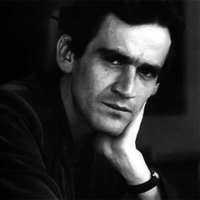
Gonzalo Arango Arias (1931 - 1976) fue un escritor y poeta colombiano. En 1958 fundó el nadaísmo, movimiento de vanguardia de repercusión nacional que intentó romper con la Academia de la Lengua, la literatura y la moral tradicionales. La intensidad de su vida está llena de contrastes que pasan de un abierto ateísmo a un íntimismo espiritual y de un espíritu crítico de la sociedad de su tiempo, expresado en el "Primer Manifiesto Nadaista" como "Se ha considerado a veces al artista como un símbolo que fluctúa entre la santidad o la locura". Arango murió en un trágico accidente en la ciudad de Tocancipá en 1976 cuando estaba planeando un viaje definitivo a Londres para que "los colombianos al perderme... me ganen".
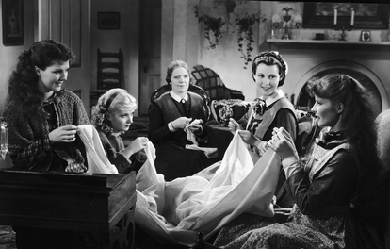
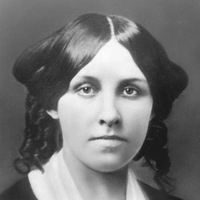
Louisa May Alcott (November 29, 1832 – March 6, 1888) was an American novelist and poet best known as the author of the novel Little Women (1868) and its sequels Little Men (1871) and Jo’s Boys (1886). Raised by her transcendentalist parents, Abigail May and Amos Bronson Alcott in New England, she grew up among many of the well-known intellectuals of the day such as Ralph Waldo Emerson, Nathaniel Hawthorne, and Henry David Thoreau.
Konichiwa, hajime mashite! Greetings, I'm a quiet, intelligent, nice, chill, cool, calm, and hard-working Cambodian and if people wanna know about me just ask. I'm a Japanophile. You can also say I'm kinda a tomboy or seem to act like one. I hope I can go to Japan one day it's my biggest Yume (dream)! I'm also aiming to become a pharmacist. =^w^= Japanese: ロンダ クハット Khmer: រ៉នដា ឃុត

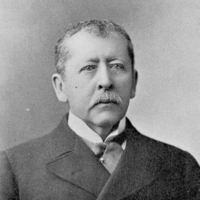
Thomas Bailey Aldrich (November 11, 1836– March 19, 1907) was an American literary figure notable for his long editorship of The Atlantic, during which he published works by Charles Chesnutt and for his poetry, including “The Unguarded Gates.” Biography Early life and education Thomas Bailey Aldrich was born in Portsmouth, New Hampshire on November 11, 1836. When Aldrich was a child, his father moved to New Orleans. After 10 years, Aldrich was sent back to Portsmouth to prepare for college. This period of his life is partly described in his semi-autobiographical novel The Story of a Bad Boy (1870), in which “Tom Bailey” is the juvenile hero. Career Aldrich abandoned college preparations after his father’s death in 1849. At age 16, he entered his uncle’s business office in New York in 1852 and became a constant contributor to the newspapers and magazines. Aldrich befriended other young poets, artists and wits of the metropolitan bohemia of the early 1860s, including Edmund Clarence Stedman, Richard Henry Stoddard, Fitz Hugh Ludlow, Bayard Taylor and Walt Whitman. From 1856 to 1859, Aldrich was on the staff of the Home Journal, then edited by Nathaniel Parker Willis. During the Civil War, he was the editor of the New York Illustrated News. In 1865 Aldrich returned to New England, where he was editor in Boston for ten years for Ticknor and Fields—then at the height of their prestige—of the eclectic weekly Every Saturday. It was discontinued in 1875. From 1881 to 1890, Aldrich was editor of the important Atlantic Monthly. As editor, he created tension with his publisher Henry Houghton by refusing to publish commissioned articles by his friends, including Woodrow Wilson and Marion Crawford. When Houghton chastised Aldrich for turning down submissions from his friend Daniel Coit Gilman, Aldrich threatened to resign and finally did so in June 1890. Meanwhile Aldrich continued his private writing, both in prose and verse. His talent was many-sided. He was well known for his form in poetry. His successive volumes of verse, chiefly The Ballad of Babie Bell (1856), Pampinea, and Other Poems (1861), Cloth of Gold (1874), Flower and Thorn (1876), Friar Jerome’s Beautiful Book (1881), Mercedes and Later Lyrics (1883), Wyndham Towers (1889), and the collected editions of 1865, 1882, 1897 and 1900, showed him to be a poet of lyrical skill and light touch. Critics believed him to show the influence of Robert Herrick. Aldrich’s longer narrative or dramatic poems were not as successful. Notable work includes such lyrics as “Hesperides,” “When the Sultan Goes to Ispahan,” “Before the Rain,” “Nameless Pain,” “The Tragedy,” “Seadrift,” “Tiger Lilies,” “The One White Rose,” “Palabras Cariñosas,” “Destiny,” or the eight-line poem “Identity.” Beginning with the collection of stories entitled Marjorie Daw and Other People (1873), Aldrich wrote works of realism and quiet humor. His novels Prudence Palfrey (1874), The Queen of Sheba (1877), and The Stillwater Tragedy (1880) had more dramatic action. The first portrayed Portsmouth with the affectionate touch shown in the shorter humorous tale, A Rivermouth Romance (1877). In An Old Town by the Sea (1893), Aldrich commemorated his birthplace again. Travel and description are the theme of From Ponkapog to Pesth (1883). Marriage and later life Aldrich married Lillian Woodman and had two sons. Mark Twain apparently detested Aldrich’s wife, writing in 1893: “Lord, I loathe that woman so! She is an idiot—an absolute idiot—and does not know it... and her husband, the sincerest man that walks... tied for life to this vacant hellion, this clothes-rack, this twaddling, blethering, driveling blatherskite!” The Aldriches were close friends of Henry L. Pierce, former mayor of Boston and chocolate magnate. At his death in 1896, he willed them his estate at Canton, Massachusetts. In 1901, Aldrich’s son Charles, married the year before, was diagnosed with tuberculosis. Aldrich built two houses, one for his son and one for him and his family, in Saranac Lake, New York, then the leading treatment center for the disease. On March 6, 1904, Charles Aldrich died of tuberculosis, age thirty-four. The family left Saranac Lake and never returned. Aldrich died in Boston on March 19, 1907. His last words were recorded as, “In spite of it all, I am going to sleep; put out the lights.” His Life was written by Ferris Greenslet (1908). In 1920, Aldrich’s widow Lillian Woodman Aldrich wrote her memoirs under the title Crowding Memories. References Wikipedia—https://en.wikipedia.org/wiki/Thomas_Bailey_Aldrich
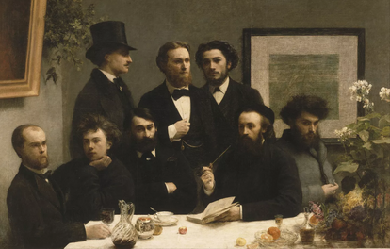
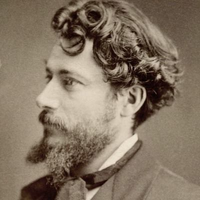
Jean François Victor Aicard, né le 4 février 1848 à Toulon (Var) et mort le 13 mai 1921 à Paris, est un poète, romancier et auteur dramatique français. Biographie Jean Aicard naît le 4 février 1848 à Toulon (Var). Une plaque signale sa maison natale. Il fait ses études à Mâcon, où il fréquente Lamartine, puis au lycée de Nîmes, puis en droit à Aix-en-Provence. Venu à Paris en 1867, il y publie un premier recueil, les Jeunes Croyances, où il rend hommage à Lamartine. Le succès qu'il rencontre lui ouvre les portes des milieux parnassiens, grâce à son cousin, Pierre Elzéar. En 1869, il collabore au deuxième recueil du Parnasse contemporain. En 1870, une pièce en un acte est produite au théâtre de Marseille. Pendant la guerre, il reste à Toulon dans sa famille. Après la guerre, il assiste aux dîners des Vilains Bonshommes et participe à la création de la revue La Renaissance littéraire et artistique. En 1874, il publie Poèmes de Provence, qui font de lui le poète de cette région. En 1876, il collabore au troisième recueil du Parnasse contemporain. En 1894, il devient président de la Société des gens de lettres. Le guide Paris-Parisien, qui le considère en 1899 comme une « notoriété des lettres », note le « romantisme méridional » de son œuvre. En 1909, il entre à l'Académie française au fauteuil de François Coppée. Il est élu maire de Solliès-ville en 1920. Jean Aicard meurt le 13 mai 1921 à Paris. Jean Aicard est l'un des poètes représentés sur le tableau Coin de table (1872) de Henri Fantin-Latour. Les références Wikipedia—https://fr.wikipedia.org/wiki/Jean_Aicard
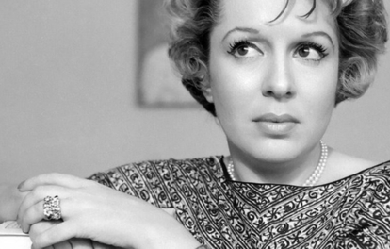

Guadalupe Teresa Amor Schmidtlein (Ciudad de México, 30 de mayo de 1918 - Ibidem, 8 de mayo de 2000), conocida como Pita Amor, fue una escritora y poetisa. Aborda en su poesía temáticas como lo son la soledad, el vacío y Dios. Escritos sus textos siempre en primera persona, se observa una clara influencia de Sor Juana Inés de la Cruz, Francisco de Quevedo y Luis de Góngora. Pita Amor no era solo una poeta más, sino que supo ganarse el nombre de musa no sólo para intelectuales, también para políticos y gente del espectáculo. Con una personalidad atrayente e impositiva, con la locura de su amigo Salvador Dalí y los desplantes de María Félix, pero eso sí, con la ecuanimidad de Ricardo Garibay y las extravagancias de Juan José Arreola. La poetisa Pita Amor, la real y verdadera undécima musa.
Poeta y educadora. PAS. Último libro: "Todo el amor que soy", en amazon.es/dp/B09QFJ5CGP "La alta sensibilidad nos abre el mundo, nos lo dimensiona y nos lo muestra con una profundidad incomparable. Así se abre paso la poesía desde la más tierna infancia. Y lo hace hacia el centro de lo que verdaderamente somos, como un torrente imparable que a veces nos desborda." Poesía para adultos y para niños.


.jpg)
